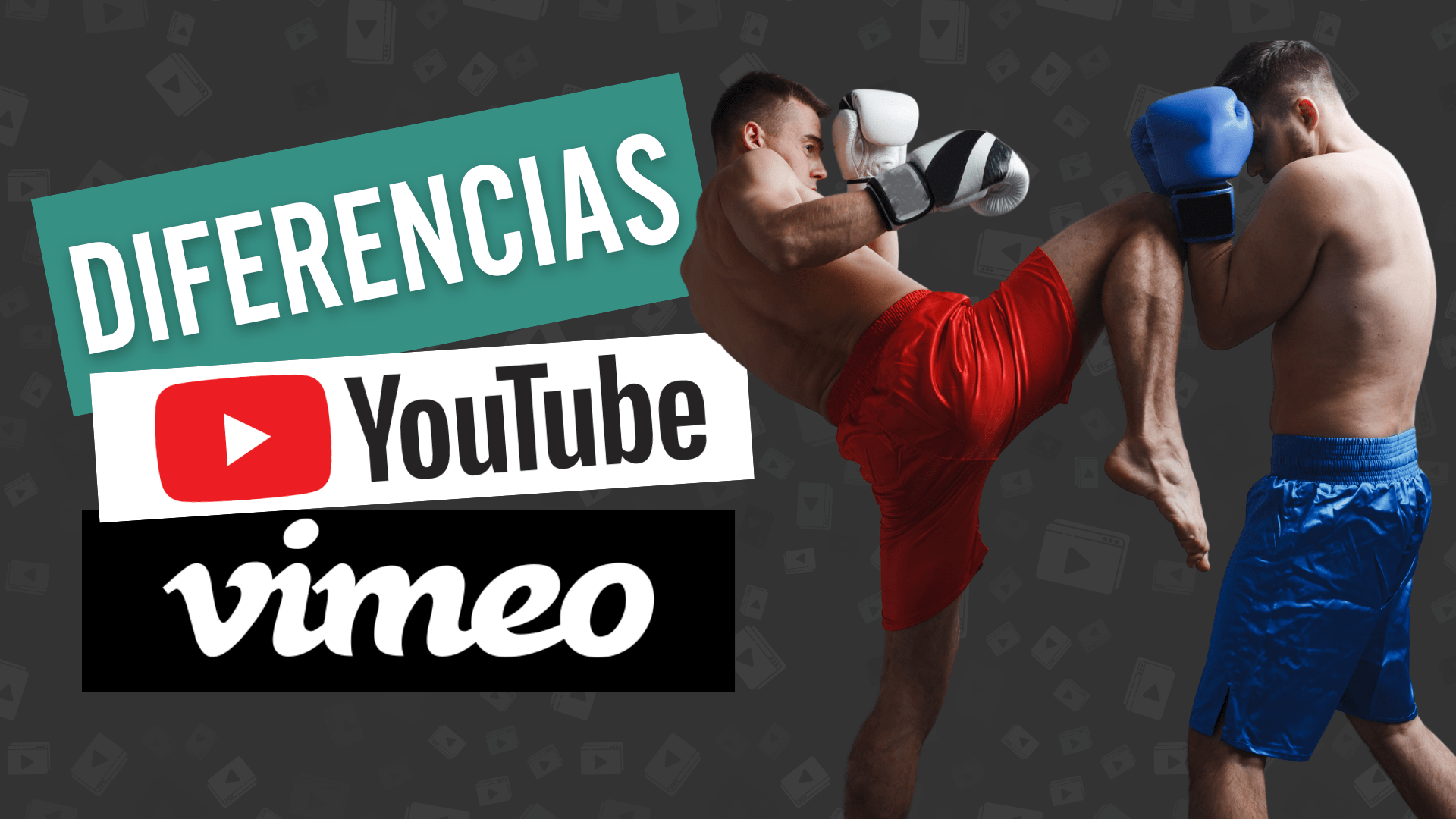It is very likely that this question has arisen when hosting videos of your company, business or service and you have wondered what are the differences between YouTube and Vimeo.
It is important to keep in mind that each platform has its own advantages and disadvantages and it is up to each person's needs and preferences to decide which is the best option for them. Basically, though, you should keep one thing in mind:
YouTube is a social network where you lose full control of your content once you upload it in exchange for earning a few cents for displaying ads on it. Vimeo is a storage space where you will always have control and ownership of your content, but to monetize it you will have to sign up for a subscription plan.
Are you willing to sell your soul to the devil?
Differences between YouTube and Vimeo
Although there are many differences between the two platforms and their choice depends on many factors, in this article I will summarize 5 important differences between the two platforms, with which I hope to help you choose the one that best suits your project.
Ownership and target audience
YouTube is owned by Google and is a massive video platform, while Vimeo is an independent video platform that focuses more on quality content and artists and content creators.
If at some point YouTube decides to close your channel, because you may have violated any of the rules of your community, you will have lost forever the content you uploaded there, with no possibility of recovering it.
Vimeo, on the other hand, has much less strict rules and you will always have access to your account to download or modify your content.
Announcements
YouTube shows ads in most of its videos, while Vimeo only shows ads in some of its videos and offers ad-free subscription options.
Until some time ago, YouTube only placed ads in videos where the creator allowed it, but for some time now, they have modified their conditions and have total freedom to place ads in any part of your video without any obligation to remunerate the creator who is not part of their YouTube Program Partner.
Imagine for a moment that your video explains how a product or service you are offering works and, in the middle of the video, an advertisement for a product of your main competitor appears... This is exactly what happens with videos hosted on YouTube.
Editing and customization functionalities
YouTube has a number of editing tools available through YouTube Studio. There, for example, you can trim a video once it has been published, add background music, etc. However, if after a while you need to redo the video (because your product or service has been updated), you will have to delete that video and upload a new one, with a new URL and statistics that will also start from scratch.
Vimeo, on the other hand, allows you to replace the entire video without losing the URL or statistics, simply by replacing one file with another. In addition to this, Vimeo also allows you to customize the player with your corporate colors, add your logo, custom calls to action at the end of the video, etc etc.
Video resolution and quality
Vimeo allows you to upload videos in higher resolution and offers video quality and takes relatively little time to process and display them to the public.
YouTube has significantly improved its video quality in recent years and now offers higher resolution options. However, you will have to take it easy and wait, even hours, for the video to be processed in all resolutions (SD, HD, 4k, etc).
Monetization
YouTube allows content creators to monetize their videos through ads and sponsorships, memberships, merchandising sales, Super Thank You, Super Chat, Super Stickets... In order to monetize a channel, you must be accepted into its Partners program, fulfilling a series of requirements, although access is completely free.
Vimeo, on the other hand, offers limited monetization options and is more focused on pay-per-view or on-demand content. However, in order to offer paid content on your Vimeo channel, you must be subscribed to one of their professional plans and they are not particularly cheap.
Conclusion
In short, if you need your content to be found through Google or YouTube's own search engine, you should choose this network. But if you are looking to host your videos in a professional way to show them on your website or online store, you should definitely opt for Vimeo.







